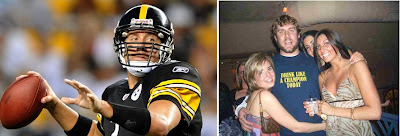Posted by Jay Livingston
A New York Magazine cover in the late 1960s showed a fortyish man –
That cover came to mind because of the recent dust-up in the blogosphere set off by a post by Todd Henderson, a Chicago law professor. Henderson was complaining about the Obama tax proposal – to keep cuts for all but the rich, i.e, those earning more than $250,000. Henderson didn’t say how much his income was, but he did say
- that paying for mortgages, student loans, children’s education (private schools), and other expenses leaves him no room for luxuries.
- that he already pays $100,000 in taxes
- he certainly does not feel rich
Like most working Americans, insurance, doctors’ bills, utilities, two cars, daycare, groceries, gasoline, cell phones, and cable TV (no movie channels) round out our monthly expenses. We also have someone who cuts our grass, cleans our house, and watches our new baby.... [W]e have less than a few hundred dollars per month of discretionary income. We occasionally eat out but with a baby sitter, these nights take a toll on our budget. . . . [This is from an e-mail Henderson, or someone claiming to be him, wrote to Brad DeLong that DeLong reprinted.]Henderson took a lot of flak. But there’s much to be said for his point, which is the same one that New York Magazine was making 35 years ago. Although these conclusions are not what Henderson intended, they still seem valid:
- there is such a thing as society
- society exerts pressure on people to spend their money on certain things
- some of these are things which, if you could not afford them, you would feel that you were not a member of your society or social group
- when income rises, so do these social “necessities.” Henderson sees private schools, two cars, and home ownership as necessities, not luxuries
As I recall, the New York Magazine story sketched out budgets for three different income levels. None of them, even the highest ($80K) left room for much in the way of savings or luxuries. A few years later, the great Stevie Wonder’s great album “Innervisions” came out, and I thought of writing a lyric based on its great song “Living For the City” (and I’m serious about all those
 “greats”). Here’s a slightly updated excerpt:
“greats”). Here’s a slightly updated excerpt:Six rooms on Central Park, the house out by the ocean.And so on.
He works at Goldman Sachs, he needs that next promotion.
His son’s at Yale, his daughters go to Brearly.
He only makes four hundred thousand yearly,
And it’s just enough, just enough for the city.
Update: Since I started composing this post, Henderson has removed his original post “because my wife, who did not approve of my original post and disagrees vehemently with my opinion, did not consent to the publication of personal details about our family.” (Full retraction and apology here, but you can still find links to his original, now deleted post. Or try waybackmachine.)
I don’t know Henderson at all, and I hesitate to draw inferences about his character. But his new post adds to my original take – that he might be a decent and well-meaning person but that perhaps he is a bit short on self-awareness. He just doesn’t seem to realize how what he says will be seen by others – others like people with average incomes, others like his wife.
Update, September 2019. In the original version of this post, for the information on the New York Magazine cover and Innervisions, I was relying on memory, and I said that they came out around the same time. I also did not have an image of the magazine cover. I recently found that cover. It was not from the 1970s, as the original post said, but from 1968. Innervisions dropped in 1973. I have changed the text, correcting for these errors, and I have put strikethrough on some of the incorrectly remembered details of the magazine cover, which I have now also included.





























